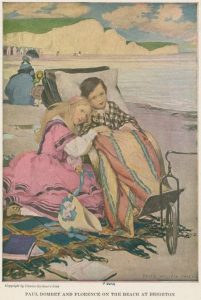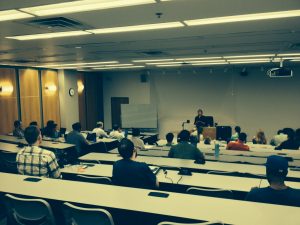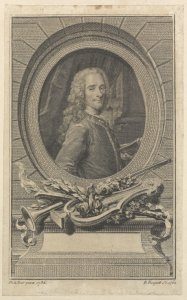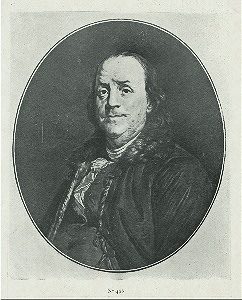My Patheos review of a fine biography on John Knox:
Jane Dawson’s new biography of John Knox is being hailed as the definitive treatment we now have. Diarmaid MacCulloch says Dawson’s work “renders all his [Knox’s] previous biographies obsolete.”
Dawson teaches at the University of Edinburgh and is a noted authority on sixteenth-century Scotland and Calvinism. She had access to new sources, not the least of which are the papers of Knox’s confidant, Christopher Goodman.
There is much helpful background in Dawson’s fine account on what the culture and church were like in Knox’s day. Some authors can get a bit tedious in trotting out various details about the milieu in which their subject lived. The reader can easily lose sight of the subject under consideration. In Dawson’s case, the historical context is used judiciously so we are continually drawn to the life and impact of John Knox.
The Knox we get in Dawson’s account is full-throated. We see Knox doing heroic things, yet dogged with depression and doubts. We also learn that Knox had a keen awareness of his penchant to pride. So Dawson certainly doesn’t traffic in hagiography, yet it is clear she finds much to commend about Knox.
Dawson makes it clear that Knox was no Calvin. Of course, Calvin was no Knox. Like Calvin, Knox had great respect for the power of language, such as “adding a ‘double translation’ incorporating alternative meanings for some of the single Latin words to convey the complexity or nuances within the original text.” But Knox’s strongest suit was the spoken word. And the spoken word was powerful in a “non-literate” culture (notice that Professor Dawson does not say “illiterate”). As Dawson makes clear, Knox’s speaking gifts meshed well with the oral and aural culture he lived in.
The year 1543 was a critical one for John Knox. This was when Knox began to embrace some Protestant beliefs. As Dawson tells the story, we do not know whether Knox’s change of mind occurred incrementally or was more dramatic. Either way, Knox’s thinking was clearly moving away from the Catholic understanding he long took for granted.
If one were to choose which book of the Bible had the most impact on “famous” conversions, Romans would surely be at the top of the list. One thinks of Augustine, Luther, Wesley hearing Luther’s Preface to Romans, and Karl Barth’s commentary on Romans, which “fell like a bombshell on the theologians’ playground.”
Remarkably, it was not Romans that convinced Knox of the Protestant understanding of salvation by grace through faith. Rather, it was the gospel of John and most notably, the seventeenth chapter. Dawson writes that John 17 was the chapter that gave Knox the ability to understand “how justification, sanctification and predestination were linked.” Calvin’s teaching further enhanced Knox’s understanding of this seminal text. Dawson’s account of the massive influence John 17 played in moving Knox to a Protestant understanding of the Christian faith is as poignant as it is provocative.
Knox’s reverence for the Bible ran deep. Like his mentor, George Wishart, Knox believed that true ministers studied the Bible well and desired to impart what they learned. Though not directly involved like others, the new Geneva Bible translation thrilled Knox. The Geneva Bible would have incalculable influence on noted wordsmiths such as Shakespeare, Donne, and Bunyan.
Along with Scripture, God uses people, and this certainly was the case with Knox. Dawson’s handling of George Wishart’s influence on Knox provides fascinating detail and a model of sorts for spiritual formation. Wishart was unafraid to proclaim the gospel with clarity. His open denunciations of the false church of the Pope were matched by his sincerity. Knox was much impressed. Knox even mimicked his mentor’s approach to preaching. Issuing strong calls for people to repent was the fruit of George Wishart’s indelible imprint on Knox. Wishart’s martyrdom sealed his honorable reputation with Knox.
Another commonality between Wishart and Knox was their consistent stance of “no compromise,” especially when it came to the integrity of the church. Initially, Knox had high hopes with the rule of Edward VI, but the final part of his reign eventuated in a major disappointment. Dawson writes, “The initial elation created when demonstrably Protestant measures had been introduced was dissipated by the harsh realities of being in coalition with a political faction that needed to maintain its power. The political art of the possible was a concept Knox shunned and he treated compromise as another term for lack of zeal.”
With biography, there are always certain things we wish we knew. Biographers know this, and some take greater liberties to speculate or even slip in a detail that is impossible to know. Here Dawson shows scholarly restraint. For example, while describing a period of time early on when Knox may have been lacking in courage, Dawson writes, “In later life Knox possibly felt embarrassed…” Dawson keeps her account moving with the particulars we can be confident of not the ones we wish we had.
Like his mentor Wishart, Knox believed the Roman Catholic Church was hopelessly corrupt. Knox didn’t flinch in saying the Catholic Church “was worse than the Church of the Jews when it condemned Christ to death.” These were dangerous times to be a Protestant minister, which is what Knox was by 1547. To be a Protestant minister meant carrying “a suspended death sentence.”
It is impossible to speak of John Knox without including his famous battles with Mary Tudor, Queen of England (latter dubbed “Bloody Mary”) and Mary, Queen of Scots. Knox declared that Mary Tudor was an “open traitoresse to the Imperiall Crown of England” who cleverly under an “Englyshe name she beareth a Spaniardes herte.” The latter charge was directed at Mary’s marriage to Philip of Spain.
Knox’s disagreements and difficulties with Mary, Queen of Scots were also substantial. As Dawson writes, Knox “told Mary she was ignorant and deluded and failed to recognize the plain word of God.” But Dawson argues that the caricatures of their famous feud do not adequately capture the complexity of their relationship. Though Dawson makes clear that Knox retained his prophetic role, he was not opposed at times to a more conciliatory posture. Consider these surprising words Knox communicated to Mary: “I pray God, Madam, that ye be as blessed within the Commonwealth of Scotland, as ever Deborah was in the Commonwealth of Israel.” Another time in a most unlikely partnership, Knox and Mary were a tag team to convince the Earl and Countess of Argyll to not get divorced. Dawsom comments that Knox and Mary could get along “provided there was no religious element.”
Knox loved purity and truth. It is no wonder then that he said Calvin’s Geneva was “the most perfect school of Christ.” The diligence Calvin displayed in battling the “Libertine” group’s influence was something Knox admired in the great Reformer. In this, Calvin mirrored what Knox found so noble about George Wishart.
John Knox’s marriage to Marjorie was a happy one. Like Sarah was to Jonathan Edwards, Marjorie was a true partner in ministry. She drew the favorable attention of no less than John Calvin. Marjorie had a mature understanding of Scripture and was well educated. She gave John Knox two sons and three daughters who survived childhood, though she did not live long herself. John Knox was devastated and sunk into depression when his beloved wife of only five years died.
Knox’s relationships outside the home were also critical to his well-being, especially when he struggled with depression. No one played a bigger role as encourager and counselor than Christopher Goodman. Knox was certainly a leader with considerable gifts. However, like the apostle Paul who needed Titus to “comfort him in his depression” (II Cor. 7:6, NASB), Goodman was an indispensable ballast to Knox’s battles with melancholia.
According to Dawson, Knox was best suited to lead during a crisis. Dawson brings up Churchill as a modern day version of this type of leader. However, as is sometimes the case, one’s greatest strength may carry an attendant weakness. Dawson observes that when “peace and diplomacy” were sorely needed Knox would not be the best person to tap as the leader.
It is not surprising to see the enthusiasm for Dawson’s, John Knox. It is engaging, lucid, comprehensive, peppered with fascinating details, and an ennobling account of a major figure of the nascent Protestant movement.




